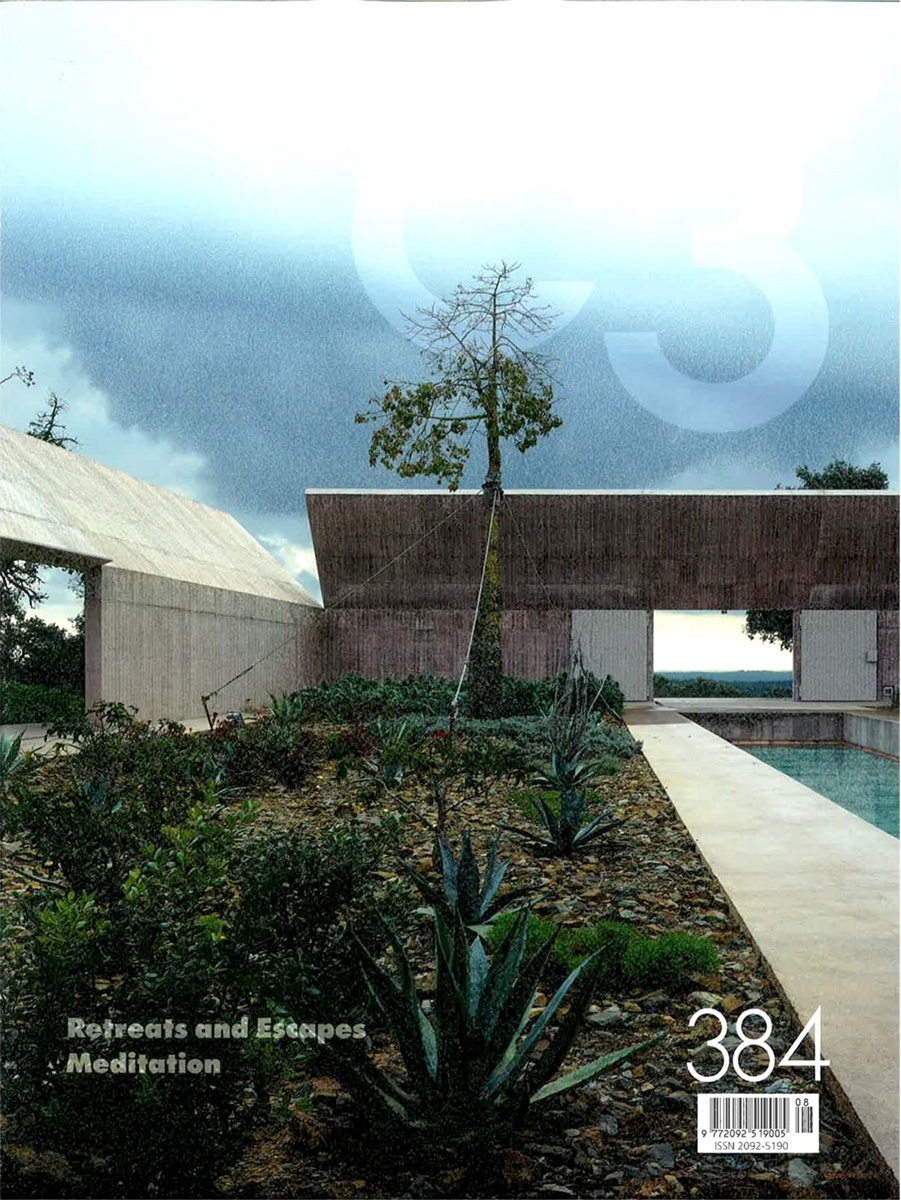The Fishing Hut - C3
August 2016
Text Niall McLaughlin Architects
Images Nick Kane
The site is a man made lake, originally built as a fish farm, fed by the river that defines its southern boundary. The river is typical of the chalk streams that run through this part of the Hampshire countryside. It is shallow, fast flowing and exceptionally unpolluted, making it the perfect habitat for migrating eels,brown trout and other fresh water fish. It provides some of the best fly-fishing in the UK.
Our client wanted a secure place to store boats and fishing tackle that could also function as a meeting place and shelter for anglers. To facilitate moving boats in and out of the water a covered mooring was required. The buildinq was to be used intermittently during the trout-fishing season from late April to September. The structure was to be as open as possible when in use to maximise views of the rural landscape in which it was situated. At the same time it had to be possible to close up and secure the building when not occupied.
In 2011 the lake was drained to carry out major works to clear silt and repair the banks. We identified a location for the Fishing Hut at the southwest corner of the lake that provided easy access from the riverbank and optimum views along the lake and river. We installed 18 precast concrete drainage rings at 1.8m centers on the lakebed and filled them with concrete to form pad foundations before the lake was refilled. The buildinq was constructed on its pad foundations between April and September 2014 without re-draining the lake. Nine galvanized steel goalpost frames are fixed to the pad foundations. The steel frames support the timber floor structure and the glue laminated Oak superstructure. The roof is made of softwood rafters, clad internally with Oak boards and externally with profiled aluminium sheeting. The building’s structure organises its plan into ten bays of l.8m. A pair of bays at each end form open decks, partly covered by the overhanging pitched roof. Below the eaves shutters and cladding formed of open jointed timber planks enclose the six central bays. This enclosure comprises a weather tight internal space of four bays and a semi-enclosed storage area. The first bay of the internal space contains an entrance lobby, we, kitchenette and dining area. The other 3 bays form an open plan area enclosed by sliding glazed screens. The storage area beyond contains a loft for boat storage, an external shower and a covered mooring with a removable floor and water gate.
In its closed state the pitched roof form and handling of the cladding materials refer directly to the construction of modern agricultural buildings. The exposed timber structure and cladding is made of Oak. We chose this native species for its durability and characteristic colour and grain. The untreated exterior timber will weather to match the silver-grey colouring of the roof cladding and steel supports.
Along the sides of the building we sought a form of shutter that gave the least visual intrusion on the continuous horizon. By horizontally pivoting the shutters upward from the eaves the enclosure disappears, leaving you on a deck above the water beneath the pitched roof. In contrast to the exterior, the timber of the enclosed interior will retain in its warm golden tone, which is revealed and reflected in the water as the perimeter shutters are opened.
